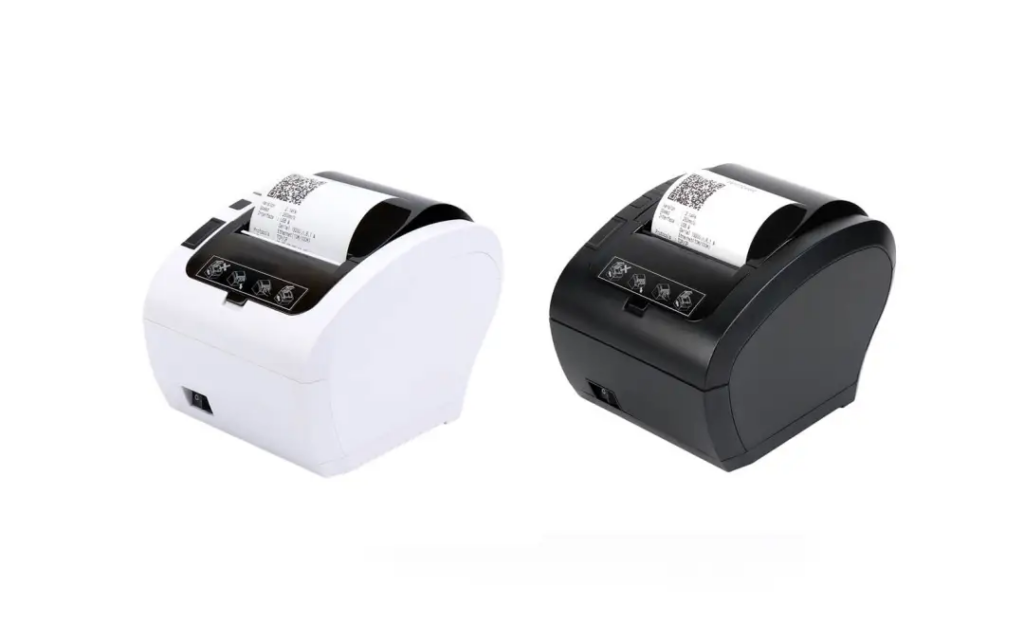How to Troubleshoot Common Issues with Your Receipt Thermal Printer

Receipt thermal printers, often referred to as bill printers, have become an integral part of various businesses, from retail stores to restaurants and more. These devices are known for their efficiency and reliability when it comes to generating receipts and bills. However, like any piece of technology, they can encounter issues from time to time, disrupting the smooth flow of your business operations. In this article, we will guide you through troubleshooting common issues with your receipt thermal printer or bill printer, ensuring you can keep your business running smoothly.
Paper Jams
One of the most common issues you might encounter with your receipt thermal printer is paper jams. Paper jams can occur for various reasons, such as loading the paper incorrectly or using low-quality paper. To resolve this issue:
a. Turn off the printer: The first step is to turn off the printer to prevent any further damage or paper tearing.
b. Open the cover: Gently open the printer’s cover to access the paper path.
c. Remove the paper: Carefully pull out any jammed paper. Be sure to follow the paper path as indicated in the printer’s manual.
d. Reload the paper: Once you’ve cleared the jam, reload the paper correctly, ensuring it aligns with the paper guides.
e. Power on: Turn the printer back on and test it by printing a sample receipt.
Poor Print Quality
If your receipt thermal printer is producing receipts with faded or illegible text, you may be dealing with print quality issues. To address this problem:
a. Check the paper quality: Ensure that you are using high-quality thermal paper. Low-quality paper can result in poor print quality.
b. Clean the printhead: Over time, the printhead can accumulate dust and debris. Clean it using a soft, lint-free cloth and isopropyl alcohol.
c. Adjust the print density: Many thermal printers allow you to adjust the print density in their settings. Experiment with different settings to improve print quality.
d. Replace the printhead: If cleaning and adjusting settings don’t help, you may need to replace the printhead. Consult your printer’s manual for instructions on how to do this.
Connectivity Issues
In today’s world, many receipt thermal printers are connected to point-of-sale (POS) systems or computers. Connectivity issues can disrupt your business operations. To resolve these issues:
a. Check cables and connections: Ensure that all cables connecting the printer to your POS system or computer are securely plugged in.
b. Restart devices: Restart both the printer and the connected device (POS system or computer) to refresh their connections.
c. Update drivers: Make sure you have the latest printer drivers installed on your computer or POS system. Outdated drivers can cause compatibility issues.
d. Reset network settings: If your printer is connected through a network, consider resetting its network settings and reconfiguring it.
Paper Cutter Problems
Some receipt thermal printers come equipped with a paper cutter. If this feature is malfunctioning, it can lead to uneven or jagged receipt edges. Here’s how to troubleshoot it:
a. Inspect the cutter blade: Open the printer and carefully inspect the cutter blade for any obstructions or damage. Clean it if necessary.
b. Check settings: Verify that the cutter settings in your printer’s software or control panel are configured correctly.
c. Replace the cutter assembly: If the cutter blade is damaged beyond repair, you may need to replace the cutter assembly. Consult your printer’s manual or contact the manufacturer for guidance.
Error Messages and Blinking Lights
When your receipt thermal printer displays error messages or has blinking lights, it can be confusing. These indicators are often designed to help you identify the issue. Here’s what to do:
a. Refer to the manual: Check your printer’s manual for a list of error codes and their meanings. This will help you pinpoint the issue.
b. Clear paper jams: If an error message or blinking light indicates a paper jam, follow the steps mentioned earlier to clear it.
c. Restart and reset: Sometimes, a simple restart or resetting the printer to its default settings can resolve error messages. Be cautious when performing a reset, as it may erase custom settings.
Firmware Updates
Keeping your receipt thermal printer’s firmware up to date is crucial for resolving potential software-related issues. Manufacturers release firmware updates to improve performance, fix bugs, and enhance compatibility. To update your printer’s firmware:
a. Visit the manufacturer’s website: Go to the manufacturer’s official website and search for the latest firmware updates for your printer model.
b. Download and install: Follow the instructions provided on the website to download and install the firmware update.
c. Follow the update process: Each manufacturer may have a slightly different update process, so make sure to follow the provided instructions carefully.
d. Test the printer: After the update is complete, test the printer to ensure that the issues have been resolved.
Conclusion
In the world of business, where efficiency and reliability are paramount, your choice of receipt thermal printer can significantly impact your daily operations. As we’ve explored the common issues that may arise with these essential devices, it’s essential to remember that Munbyn is amazingly helping your business make progress by providing outstanding Munbyn receipt thermal printers and Munbyn bill printers.
Munbyn’s commitment to quality and innovation ensures that your business can rely on its printers to produce clear, precise receipts consistently. By following the troubleshooting steps outlined in this article and investing in a Munbyn receipt thermal printer or bill printer, you can minimize disruptions and maximize the efficiency of your business operations. Remember to consult your printer’s manual and seek assistance from Munbyn’s dedicated support team whenever needed, and you’ll have the peace of mind that your business is equipped with top-notch technology to thrive in today’s competitive market.
